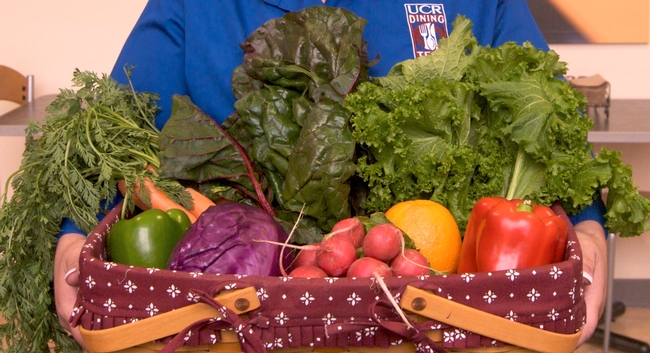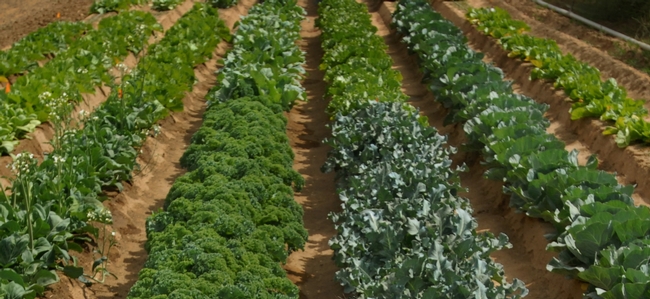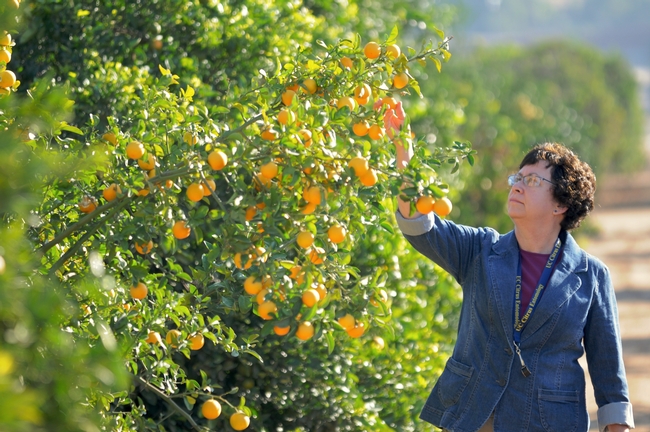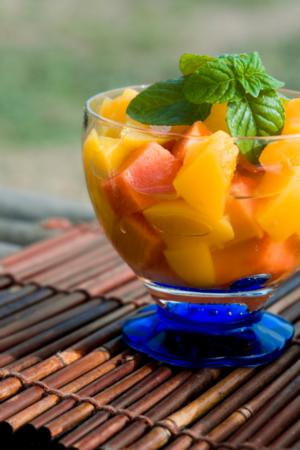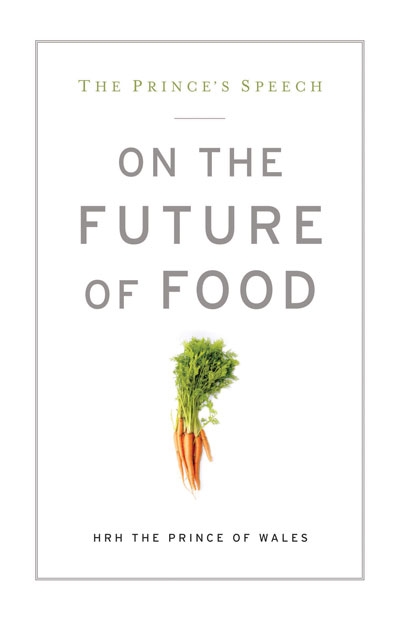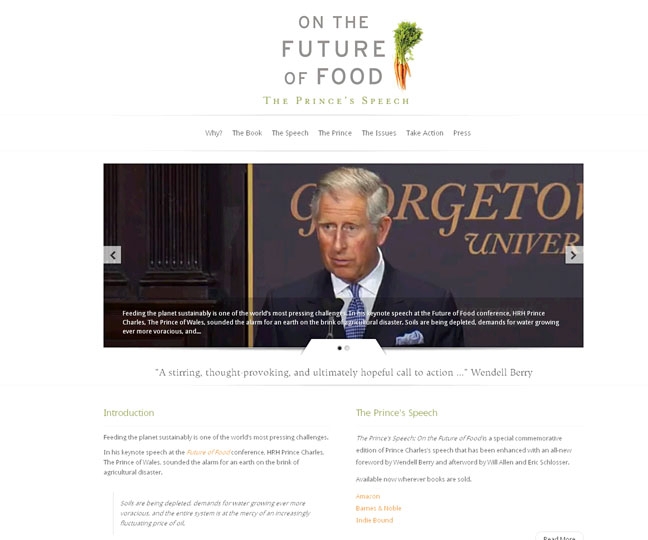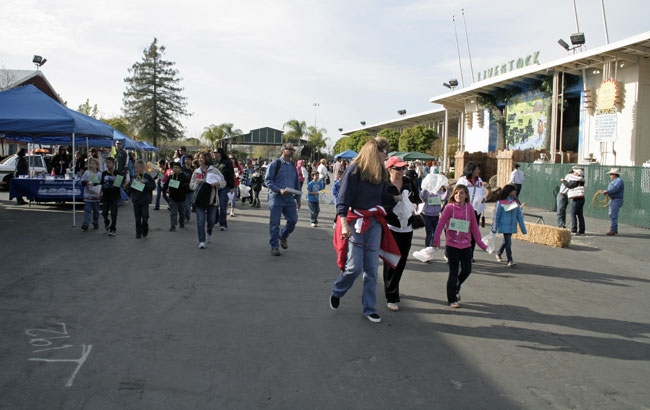UC Food Blog
Solving the 2050 Hunger Game
The world population is more than seven billion, and by 2050 that number is set to rise to nine billion — an increase of 50 percent since 2000. Can we possibly feed so many people?
Yes, according to Prabhu Pingali, who was invited to UC Riverside last week by the One Health Center to give a talk. Pingali, the deputy director of the Agriculture Development Division of the Bill & Melinda Gates Foundation, has more than three decades of experience in the field of agriculture. His hour-long talk focused on how nine billion people on the planet can be fed.
He explained that agriculture was on no one’s agenda from 1988 to about 2006-2007. But today it is back. “I am in the right profession,” he said, smiling.
He said the world experienced a sharp increase in food prices in 2008 due to a “perfect storm” — a rapid demand for food quantity and quality (in terms of diversity) and a high volatility in food prices — and a large group of people adopted a pessimistic view of the world’s food production thereafter. The world will not be able to feed itself, they warn.
“But we’ve been here before and we have come out of it,” said Pingali, who has authored ten books and more than 100 refereed journal articles and book chapters on food policy, technological change, productivity growth and resource management in the developing world. “Actually, things are not as bad as you think they are. I take a more positive view.”
The audience sat up straight, ears pricked up, eyes trained firmly on Pingali’s slides.
He explained that in 1963 the world experienced a massive food deficit but that by 1970 the overall food outputs matched population growth rates, with Southeast and East Asia showing the fastest rise in productivity.
“Only in sub-Saharan Africa was there a decrease in productivity,” he said. “Technology made the change possible. But technology cannot do it alone. If government support had not also taken place, we would not have seen a change.”
Looking ahead
Pingali’s slides showed how on the demand side in Asia and Latin America the per capita consumption of staple grain is declining rapidly. As incomes increase, he said, the per capita consumption of wheat and corn decreases and diets get diversified, with people seeking higher quality food.
He predicted more consumption of meat, milk and dairy products in the future. In East Asia, meat consumption will be about 80 kg per person per year in 2050 (in 1975, it was less than 20 kg per person per year; in 2000 it was about 40 kg per person per year). Further, in the future much biofuel will be from cellulosic technology and other forms of waste, not grain.
But what about land area? Will there be any left to produce food for two billion more people? Pingali thinks so. He said overall 4.2 billion hectares of land on the planet are suitable to cultivation; of this area, only about 1.7 billion hectares are already under cultivation.
“We will see an intensification of land already under cultivation, that is, growing a crop more frequently on the same land,” he said. “One reason these areas are currently not productive is poor soil — acidity, erosion, sloping lands, low organic matter and low nitrogen.”
Pingali predicts water scarcity will be a growing constraint. He explained that currently enormous wastage of water occurs in many parts of the world, but that water use can be better managed.
According to him, we can expect that the following steps will be needed to manage future food production: changing cropping patterns; improved tolerance to drought and submergence; increased use of hybrids; and better land and water management practices.
What should we do?
Pingali thinks we should keep the focus on agriculture and invest in smallholder productivity growth.
“Technology, including biotechnology, will be an important part of the solution,” he said. “Policies that enable and encourage smallholder productivity growth are crucial. We need to pay particular attention to stress-prone environments and invest in a long-term strategy for biofuels that does not rely on increased use of food grains.”
Pingali predicts Malthus will be proven wrong again because of “our ingenuity and our ability to deal with resource scarcity through technical innovation and focused policy change.”
At the end of his talk, several hands went up and a vibrant Q&A ensued. Unfortunately, I never got to ask my question, time being up: “Dr. Pingali, how would your talk today change for feeding a world population of 15 billion?
Not by much, I suspect he’d have said with confidence and no hesitation, his unstoppable optimism swelling further in the room.
Ode to Breakfast!
Breakfast has to be the greatest meal of the day by far! I might be biased because it includes coffee – in my opinion the greatest beverage in the world - but that’s a subject for another day.
There are so many benefits to breakfast. The options of what to eat are endless - plus breakfast wakes you up and gets you energized for your day! It makes me sad that most people won’t take the time to fall in love with breakfast.
The usual excuses are always present:
- “I’m on a diet, so I’m skipping breakfast!”
- “I don’t have time.”
- “I’ll grab something at insert fast food/coffee house chain here it’s easier.”
- “I can’t eat breakfast, it upsets my stomach.”
Come on people wake up and smell the oatmeal and eggs!
Breakfast can be the most elaborate meal to make OR the easiest and fastest. Here are some tips to help beat the excuses and rediscover breakfast for the health of you and your family!
Skipping a meal will help you lose weight—true or false? FALSE! Breakfast literally means to “break-the-fast,” after sleeping all night. It’s important to eat to get your metabolism going for the day! Watching your weight? Try taking the time to create these meals that contain all 5 MyPlate food groups:
- Make an omelet or scrambled eggs and toss in your f avorite chopped veggies. Cut the fat by using just the egg whites. Add some low-fat cheese, and eat with whole wheat toast and a sliced apple.
- Make your own power smoothie: blend an apple, banana, some berries, a carrot and zucchini with low-fat yogurt and some orange juice. Serve with half of a whole wheat bagel topped with peanut butter.
- Make a breakfast burrito! Warm a whole wheat tortilla, cook up your favorite meat, scrambled eggs, and toss in some black beans. Add veggies, salsa, and low-fat cheese.
Breakfast takes too long to make-true or false? FALSE! So you would rather sleep in an extra 15 minutes than take the time to make a hot breakfast?
DO get that beauty rest!
DON’T skip breakfast or spend the money on a less healthy fast food breakfast.
Try these tips to have a healthy breakfast on the go:
- Take a whole wheat tortilla and spread with peanut butter; add granola and your favorite fruit! Roll it up and go. Take a glass of low-fat milk with you to get some dairy.
- Broil half of a whole wheat bagel with low-fat cheese; eat on the go with a hardboiled egg, and a banana.
- Prep your breakfast burrito the night before, so it’s ready to grab on your way out the door.
Breakfast isn’t for everyone-true or false? FALSE! So you tend to have a bit of a queasy stomach in the morning? Here are some tips to overcome the queasy and still eat breakfast:
- Take your time, don’t rush to eat breakfast. Set aside time to relax and enjoy your meal.
- Take your food with you to work or school, wait until your stomach calms down and then eat!
- Queasiness tends to be the effect of an empty stomach, so it’s even more important to eat breakfast.
When you eat a healthy breakfast you are more likely to focus and pay better attention to work, school or home activities.
Growing Solutions in Urban Communities
On Saturday, March 31, Angelenos celebrated the Mayor's "Good Food Day of Service." Los Angeles Mayor Villaraigosa, the Los Angeles Food Policy Council, and numerous community partners organized this city-wide event to highlight the importance of healthy food and celebrate the legacy of César Chávez. There were 100 participating sites around the city, all featuring community service focused on healthy food access.
I participated at the Glassell Park Community Garden in Northeast Los Angeles by giving several short workshops on container gardening. I had not visited this garden before, and found its history especially interesting. Wedged between apartment buildings and houses, the garden just got started last July, yet already seems to be a hub of community activity. Previously, it was the site of a house that was a notorious drug distribution center. The story of this site was featured in the Los Angeles Times last April. The house was demolished and the lot donated to the City. The area's city councilman believed that a community garden on the site could help the neighborhood heal from years of exposure to criminal activity, and enlisted the partners necessary to make it happen.
In this situation, a community garden was viewed as part of a solution to an urban problem. The notion that growing gardens can help solve urban challenges is becoming common among policymakers. Many municipal leaders are now looking to community gardens and other types of urban agriculture to address issues that range from illegal dumping on vacant lots to lack of access to fresh produce in urban "food deserts." Cities around California and the U.S. are developing policies to support urban agriculture. San Diego, for example, recently passed new policies supporting urban agriculture. A summary of urban agriculture policies in other major US cities was recently released that shows how extensive this movement is across the country. Urban agriculture can encompass everything from community and school gardens, to small commercial farms, to raising bees and chickens in the city.
As for members of the Glassell Park Garden in Los Angeles, they are happy with their small piece of urban paradise. After a drawing, the winners of two remaining plots were announced Saturday, to the great excitement of all participants. To hear from one of the garden's organizers, who is also a UC Cooperative Extension Master Gardener, visit this Good Food LA YouTube clip.

Urban agriculture can help improve access to healthful food
Review: 'On the Future of Food'
I was recently given a copy of the Prince of Wales’ speech “On the Future of Food,” offered at a conference of the same name, held at Georgetown University in Washington, D.C. in May 2011. Rodale has reproduced the speech in a small pamphlet with a foreword written by Wendell Berry, and an afterword provided by Will Allen and Eric Schlosser (all super writers and superstars in the sustainable food system movement). GRACE Communications, which helped sponsor last year’s conference, has created a website – www.ontheFutureofFood.org – to serve as a central site where individuals can learn more about the topic and this speech.
The pamphlet or tract format of this publication was intriguing to me; I immediately thought of Thomas Paine’s Common Sense. It evoked a sense of the historical use of pamphlets in America as a means to influence political life. Its compact size and compelling message invite the reader to pass it on. (I did find it all a little dizzying in a historical sense to think of the food aspect of the relationship between America and Great Britain over the centuries: America first as a British colony with a role in providing agricultural and natural resource products to the mother ship; then America as a new nation created by a revolution of farmers – okay, farmers AND others; America providing much needed sustenance to England during World War I; and in 2011, a modern American audience hearing an important message about sustainability in food systems from a member of the British royal family. Admittedly, though, there is an enormous difference between King George III and Prince Charles).
The food system today is a highly political issue. Nearly everyone I know agrees that the future of food will require a complex and inter-related set of choices and actions, each with economic, cultural and geopolitical implications. Nearly everyone I know agrees that many of our current practices are not sustainable when considered within any number of frames (water quantity and quality, pollution, soil erosion, climate change, social justice, etc). We can no longer afford to view pieces of the food system in isolation (whether by commodity or a single geographic location). Rather, we must view the system as a whole, because the “solution” to a production problem in a certain commodity or place may create problems in other areas. Acting in concert may save us; continuing to consider food production in an isolated fashion will certainly doom some of us.
Prince Charles discusses in some detail international food insecurity, which is a very serious issue with implications for all of us. Agricultural productivity is declining, population is increasing, and the challenges on the production side are complex and growing. His Royal Highness notes that food insecurity threatens political stability in some countries. We’ve seen that in the last year in the Middle East: social unrest is about a desire for democracy, but it’s also about the cost of bread. In countries where economies are growing (such as India and China), diets are becoming more westernized (i.e., increased consumption of meat), which places additional demands on a system operating under finite resources and other constraints.
In 2008, a report called the “International Assessment of Agricultural Knowledge, Science and Technology for Development” was published. Representing collaboration among a number of groups, including the United Nations, the report concluded (among other things) that small-scale farming systems utilizing agro-ecological approaches were found to be among the most productive in what the report classified as developing nations. This finding could have implications for how the challenge of food insecurity is approached. A full copy of the report can be found at www.agassessment.org; it provides an interesting and somewhat sobering view of the state of agriculture and food systems around the world.
In general, “On the Future of Food” lays out most of what more and more people are coming to believe about the food system. It does so succinctly, summarizing a wide range of issues briefly (yet thoroughly). It provides a systems view. What is novel in the piece are Prince Charles’ statements about the true costs of food production, which he argues are not factored into the bottom line. His point? Everyone pays a higher price than the “market price,” whether it be through the costs of mitigating pollution, increased public health costs due to higher obesity rates, etc. Of no small consideration are what Prince Charles terms the “true costs to the Earth” of certain production practices. (He deems low food prices in some nations “an illusion”). He also briefly discusses a study, sponsored in part by the United Nations, entitled “The Economics of Ecosystems and Biodiversity” (TEEB), which explores the concept of natural capital. The purpose of this study in part was to “initiate the process of analyzing the global economic benefit of biological diversity, the costs of the loss of biodiversity and the failure to take protective measures versus the costs of effective conservation.” The full report can be found at www.teebweb.org.
Some have dismissed the prince’s work on sustainability issues as the dabbling of a rich royal who is removed from the concerns of real life. However, through his foundation, the prince has been engaged in the issue of sustainable communities for a quarter of a century. He has long been engaged in developing sustainable practices on the properties he owns. Since 2004, Prince Charles has also worked on an “Accounting for Sustainability Project” that provides tools for various businesses and other groups to help achieve the changes needed in corporate reporting, accounting and decision-making that will take into account natural capital (the kinds of changes he deems necessary in the food system for it to achieve true sustainability).
The Prince of Wales shares how he is inspired by recent initiatives in the United States (he even mentions Wal-Mart’s local/organic sourcing). Perhaps the most emotional and emphatic arguments for change in this pamphlet come in the foreword and afterword, written by Wendell Berry, Will Allen and Eric Schlosser (the afterword having a particularly populist feel to it).
The prince uses a number of statistics in this pamphlet, and the references page might prove particularly useful to those seeking current information on the topic. This was a good quick read that I’m eager to pass on. The novel size and format attracted the interest of my teen daughter as she passed by; she wanted to know what it was and it sparked a conversation that was worth having…on the future of food.
Getting kids excited about 'anytime' foods
Children can eat a healthier diet by making some easy substitutions in their food choices, avoiding "sometimes food," like candy, soda and chips, and instead eating "anytime food," like fruits, vegetables and low-fat milk.
UC Cooperative Extension nutrition educators in Fresno County staged a skit at the Fresno County Food & Nutrition Day March 23 to reinforce these healthy eating messages. The event drew nearly 2,000 third-graders to the fairgrounds.
"Scarlet Strong," played by UCCE nutrition educator Nath Say, battled it out with "Rhonda Rotten Tooth," brought to life by UCCE nutrition educator Shawna Rogers.
Applause by the children gave Scarlet strength to knock down the unhealthful food Rhonda prefers - crunchy cheese sticks, chocolate chip cookies, candy, french fries and sugary soda - and encourage Scarlet to instead choose carrots, strawberries, bananas, sesame seed pretzels and milk.
The skit complements UCCE's CalFresh nutrition education program, which reaches out to children in schools where 50 percent or more of the students are eligible to receive free or reduced-price lunches.
Watch the skit in the three-minute video below:



